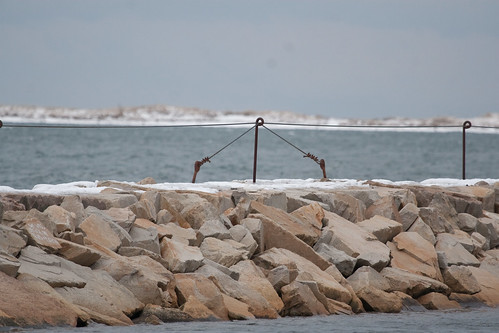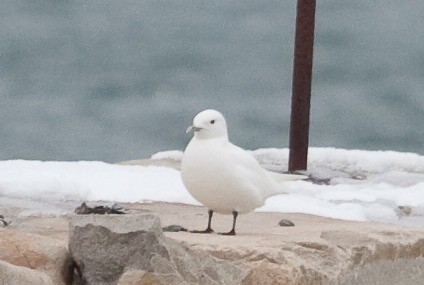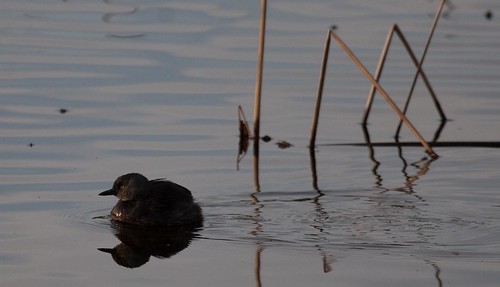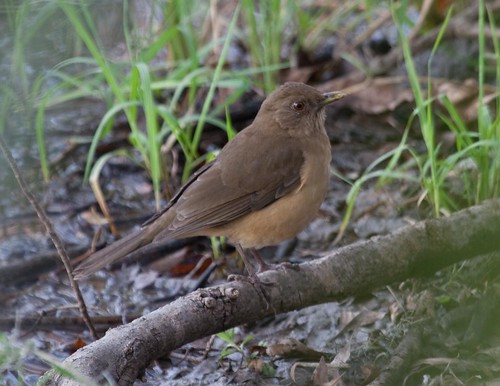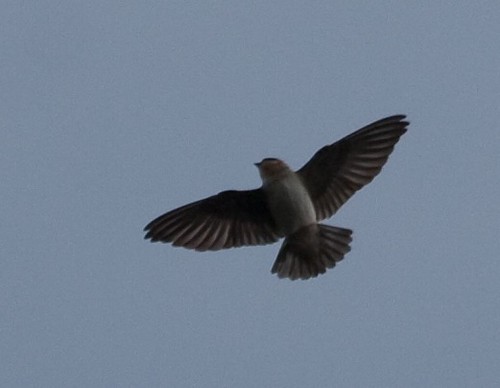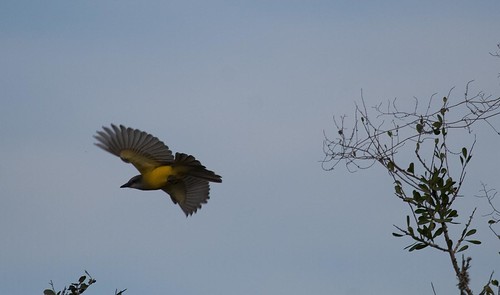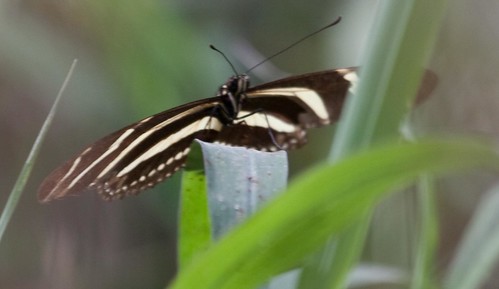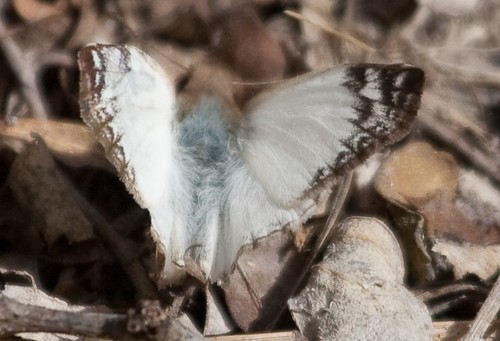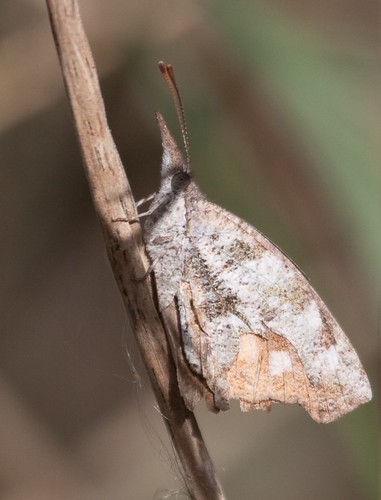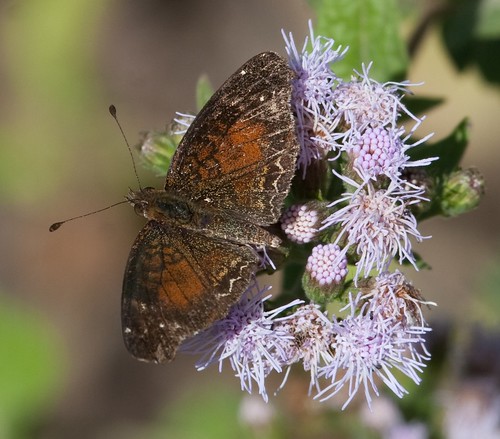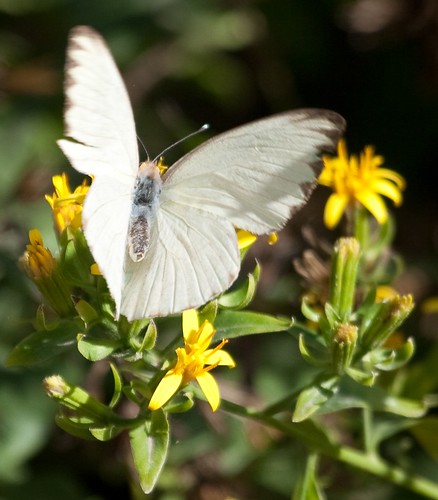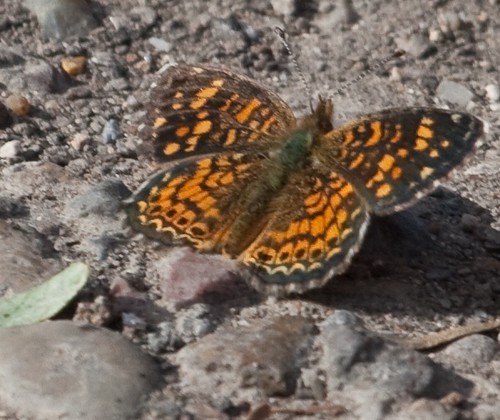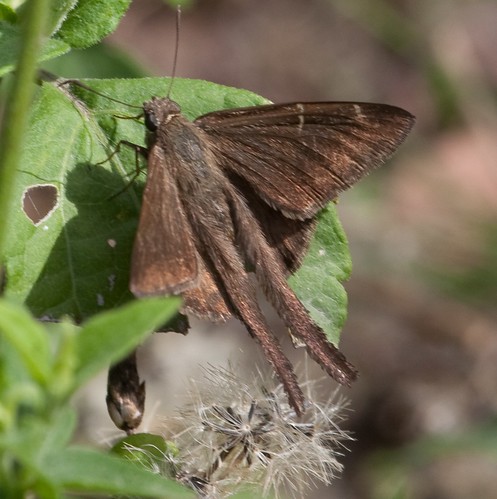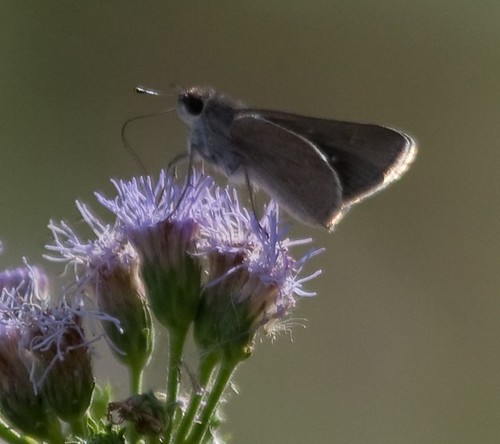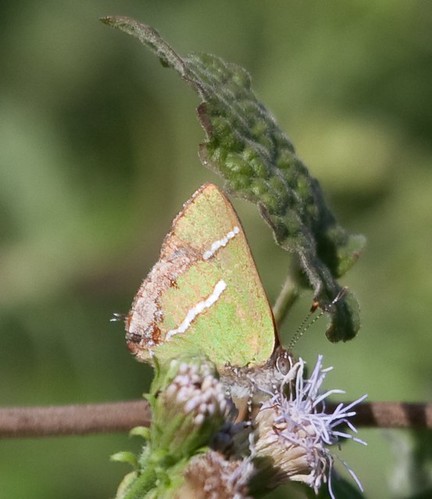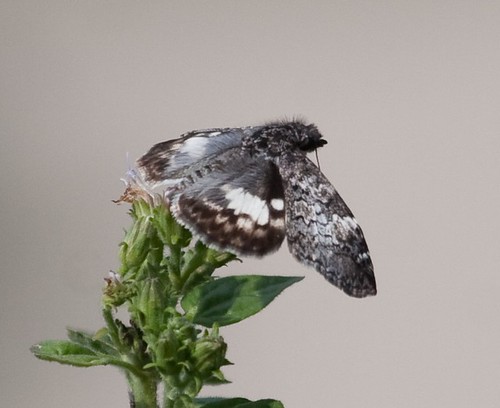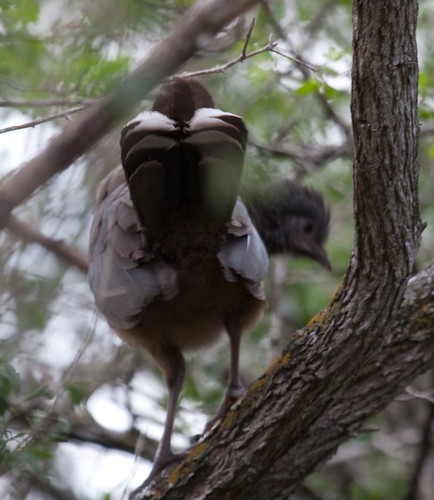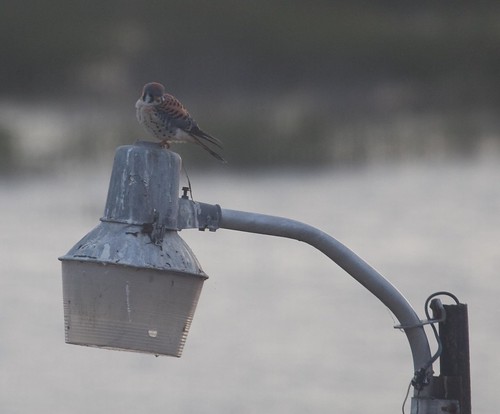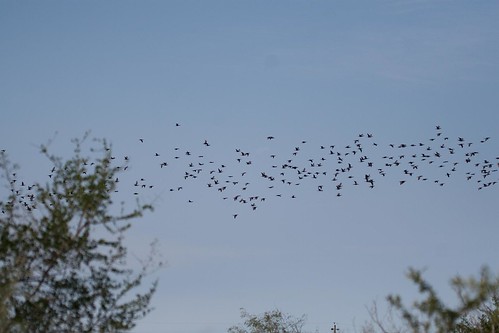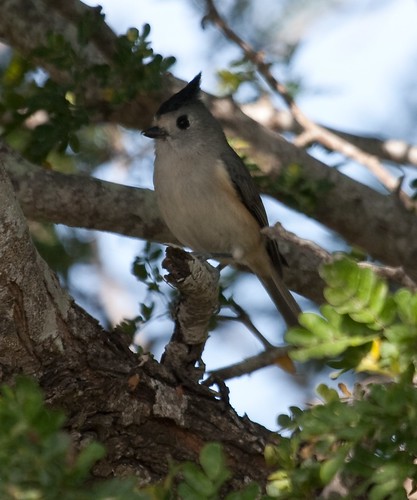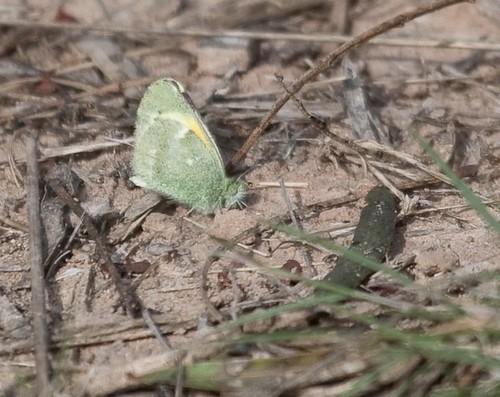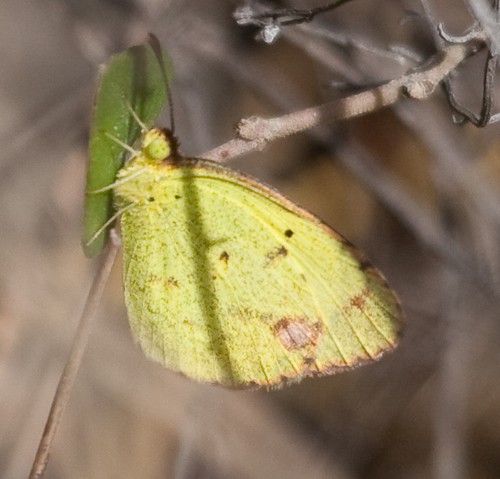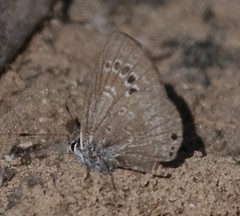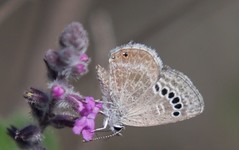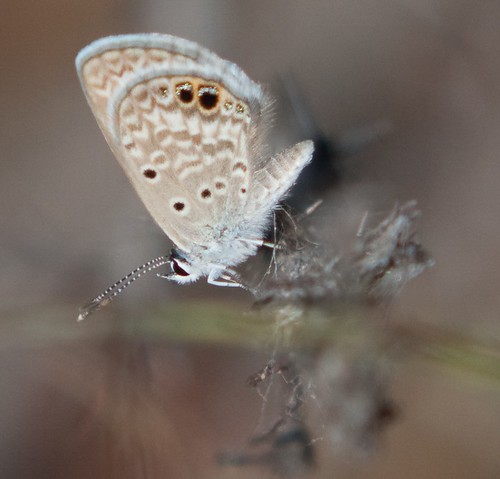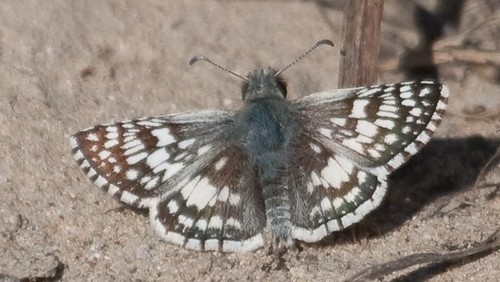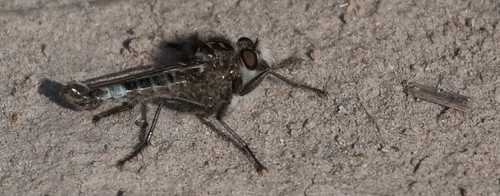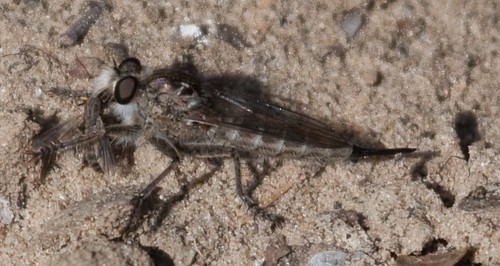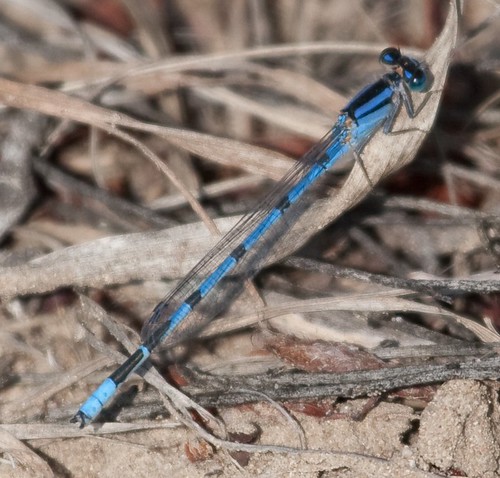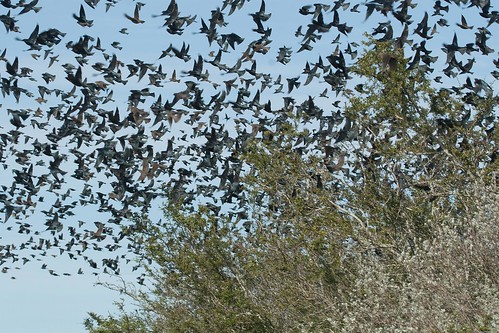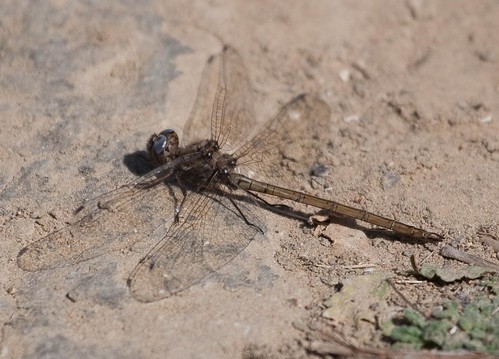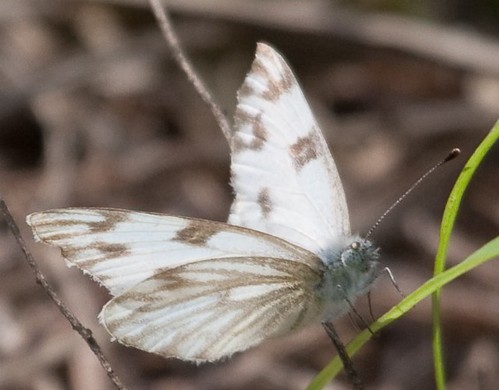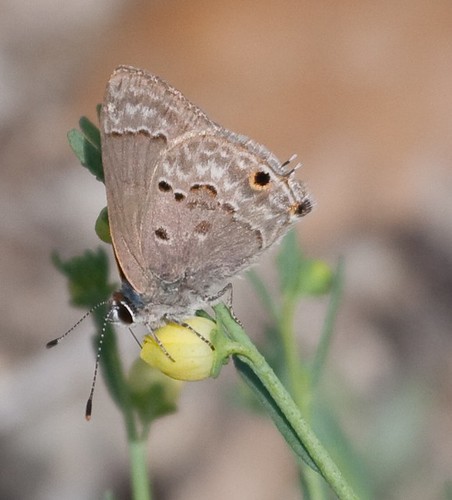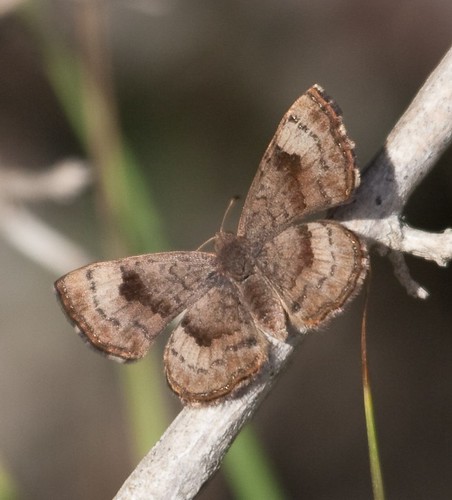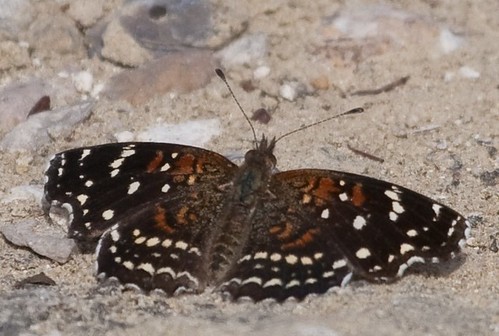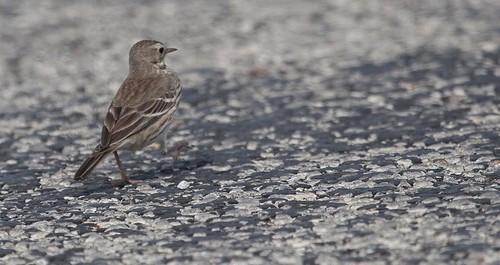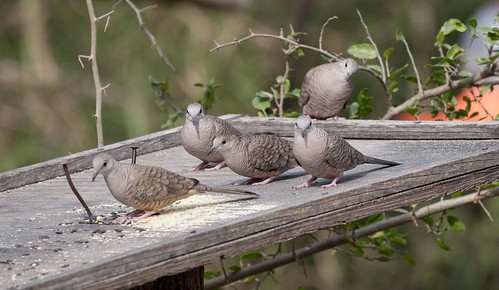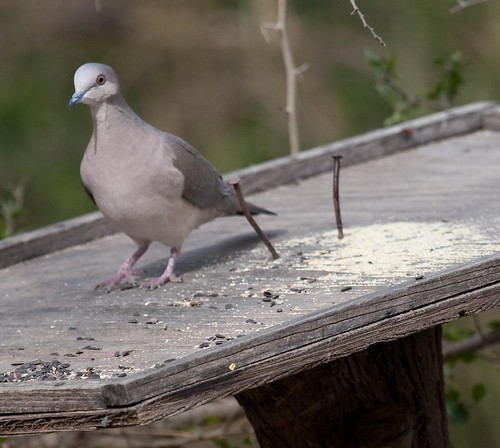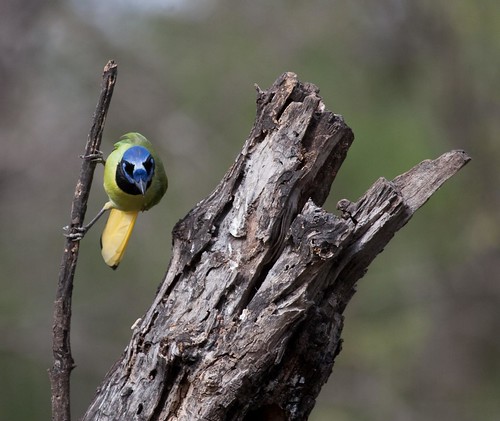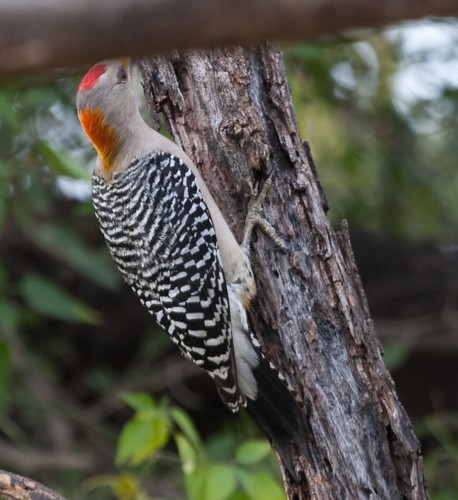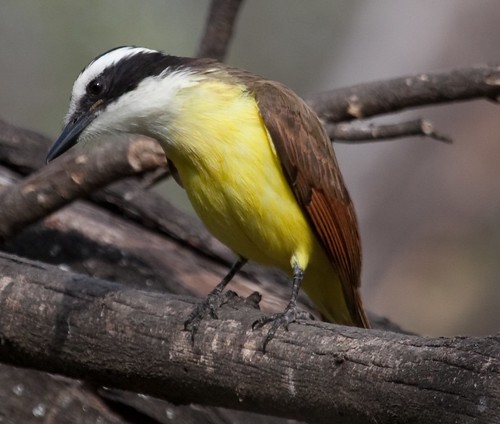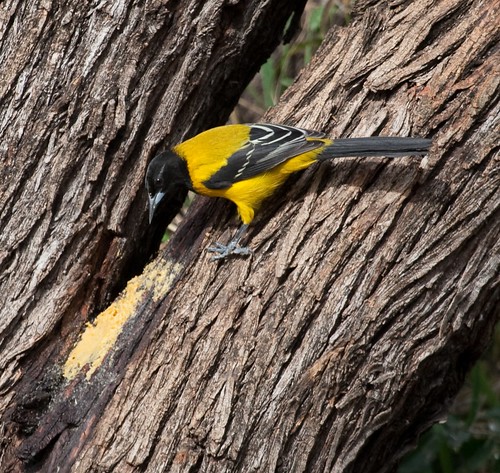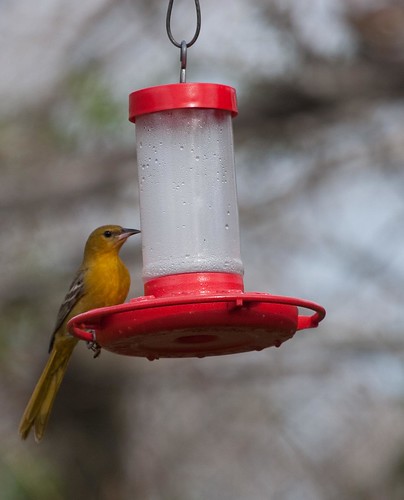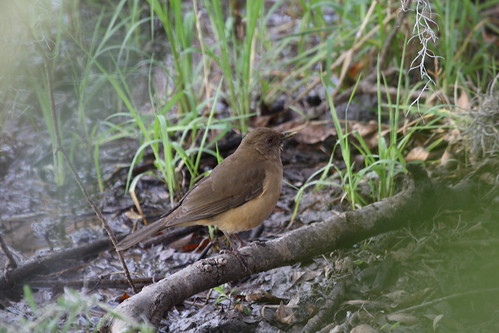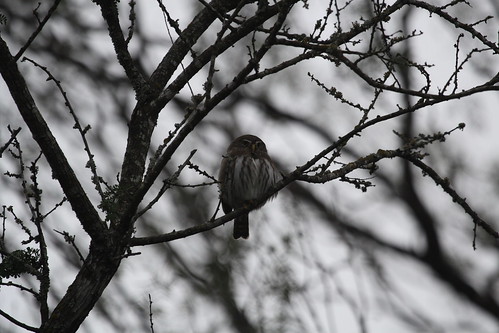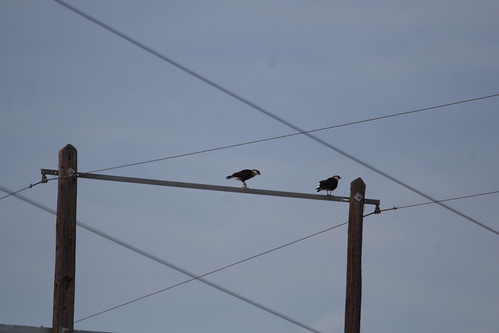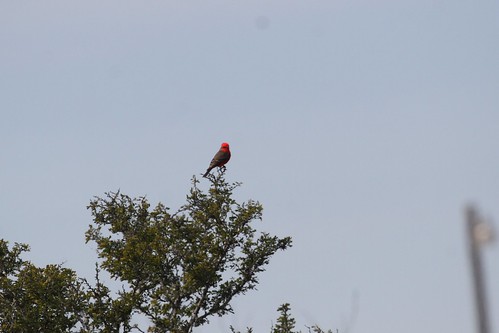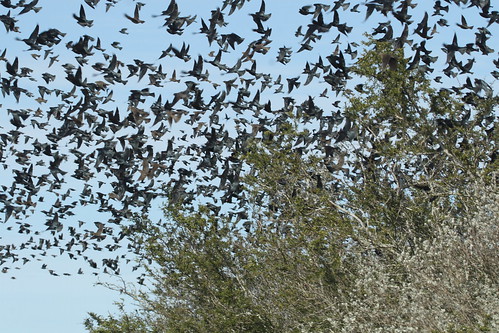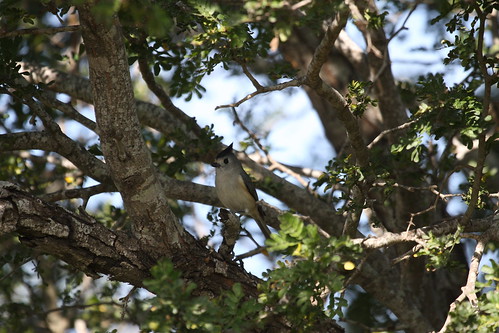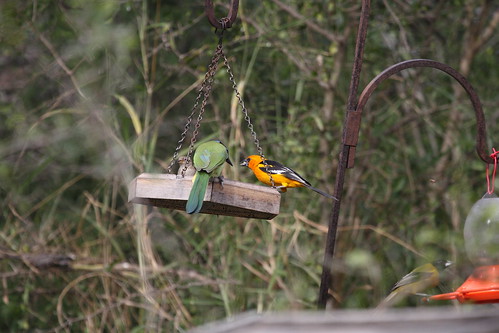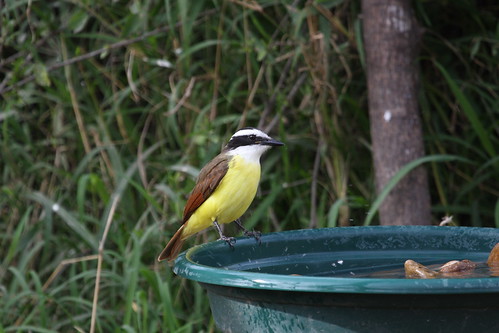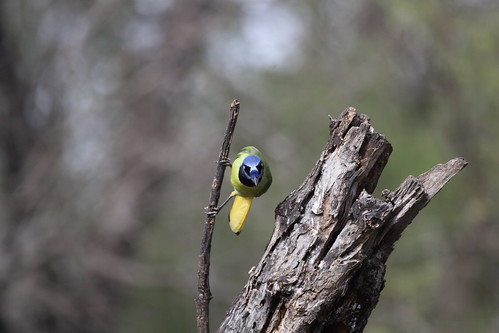Tuesday, January 13
As I noted in yesterday’s post, I scaled back today and headed to Resaca de la Palma. This is a brand new state park (open about 5 weeks) that has been getting good reviews. On the way over, I had noticed a birding trail sign right by the hotel, so I took a swing by. I believe it was for site 44, the Fish Hatchery. Partway down the road, two dogs ran in front of me, which caused a bit of a delay as I couldn’t see whether they had moved or not. I got down to the end of the road and didn’t see much habitat (reading the description later, I think I needed to go down to the right a bit), so I turned around and headed to Resaca.
On the entrance road, I picked up yet another flyover life when several Long-billed Curlews passed over (unfortunately I never got them on the ground). I found the parking lot and checked in. Arriving at 8, I was told the tram wouldn’t leave until 8:30 and that there was a short trail right there. I took a walk down to the end. On the way, I found a flock of migrants/overwintering birds that included a Blue-headed Vireo and a Black-throated Green Warbler. At the end was a nice overlook at the water. I found a bunch of Solitary Sandpipers, but not a lot more.
I got back to the headquarters ahead of the tram and found a couple Lark Sparrows in the trees. The tram driver showed up shortly and I was the only one around for it. I hopped off at the first stop (a couple more Tropical/Couch’s Kingbirds along the way). The driver told me that he liked the trails up a little further more than these and that I could catch the next tram in about an hour. I walked the short distance to the end of the first trail and immediately had a Myiarchus fly across the water. Unfortunately it disappeared quickly and I have no idea which one it was. The water was loaded with Least Grebes and when I turned around to go elsewhere a Wilson’s Warbler popped up.
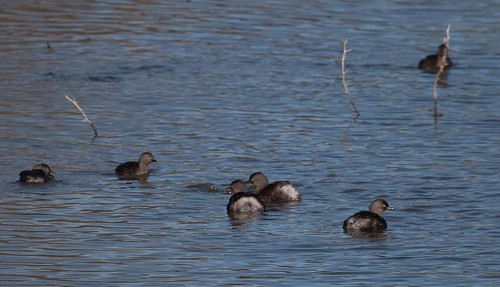

Across the trail at the next opening, I didn’t find too much. It wasn’t close to time for the tram, so I figured I could walk down to the next set of trails and then catch the tram later. On the way down, there were several signs along the road including this one:
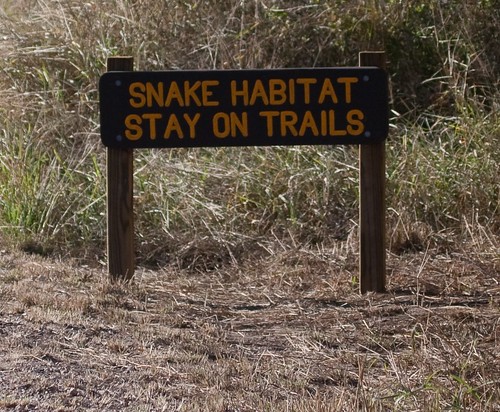
We had passed one in the tram. Passing quickly, I had read it as Shaky Habitat. I thought that was an odd way of saying fragile, but this makes more sense. Walking down the road, I found another Blue-headed Vireo. I turned down the next trail (the Flycatcher Trail) and followed the signs to the next overlook. There wasn’t much water around and the only bird at the water was an Eastern Phoebe. However, scanning through the vultures overhead I found a couple Blacks and later two Anhingas passed by as well. The vultures eventually came in close enough for photos.
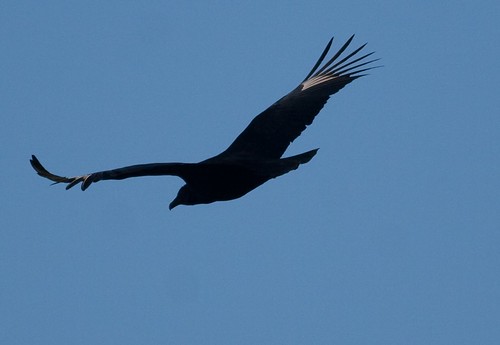
I continued on and decided to follow the Flycatcher trail all the way around. Not too far down, a couple dragonflies flushed. I waited them out and one eventually landed. It looked like a darner and I quickly started snapping photos.
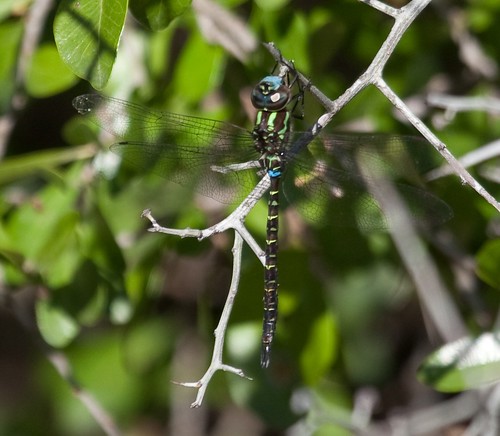
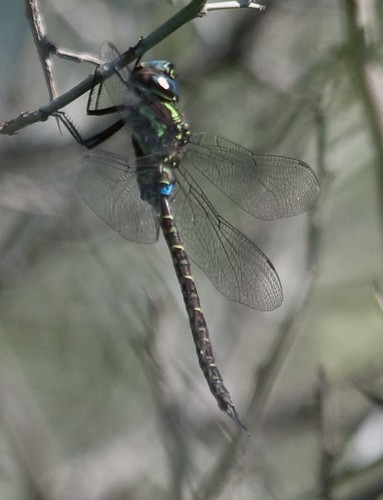
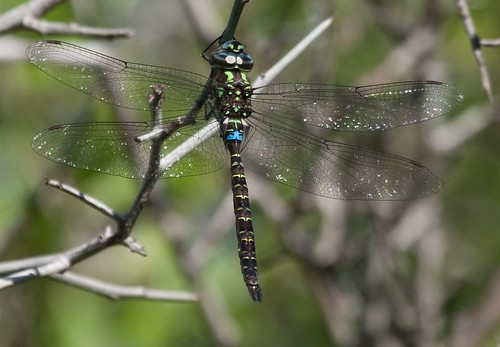
Once back at the car, I was able to identify it as a Turquoise-tipped Darner, another south Texas specialty, although one that appears to be expanding its range quite a bit.
Looping around, there wasn’t much else. Several Turkey Vultures flushed out of the trees but that was about it. Once back on the road, I continued on. Several Common Green Darners flushed out of the grasses and a surprise Northern Harrier flew by. Further on, a nice mature male Band-winged Dragonlet came close to posing in the open.
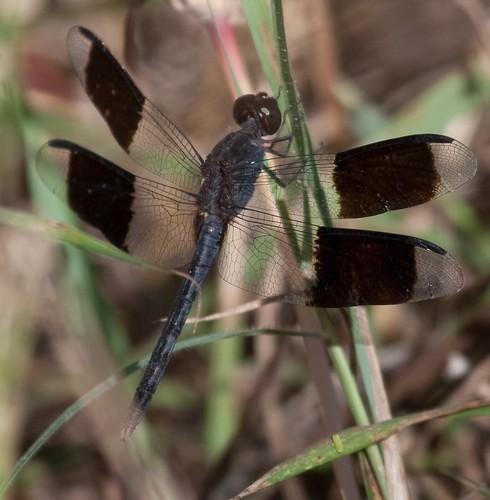
As one of the Green Darners eventually.
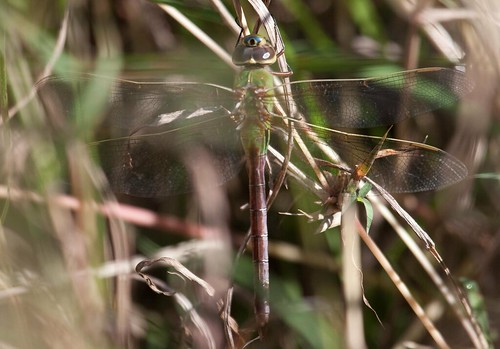
Further down, I caught something big flying over. It was quite pale but disappeared quickly. After puzzling for a second because male harrier didn’t seem quite right, I realized it had to have been a White-tailed Kite, another lifer. Again, not the best view.
I soon reached the Yellowthroat trail, which runs along water for a good distance and then intersects with a trail that appeared to run back to the road. Starting down, there were a couple egrets in the water and some Wood Ducks took off. A bit further down, I came across an Empid. It gave a couple whit notes and then disappeared. I walked back and forth for a few minutes looking for it. At one point I thought I had it and snapped a few photos before realizing it was just a phoebe, but shortly after I did get a brief view. One photo almost came out and from what I could see there was nothing to say it wasn’t a Least Flycatcher.
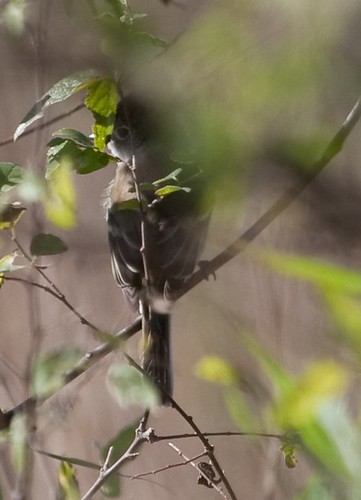
Looping around to the part of the trail that wasn’t by the water, I started seeing a few more insects (lots of Carolina Satyrs all along but not much else before). Several Dusky-blue Groundstreaks were flying around, giving moderate views of the blue upperside. No photos of that, but I did get some normal poses.
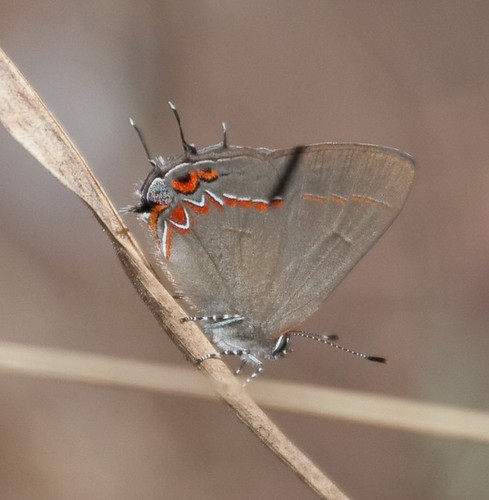
There were also a few Variegated Meadowhawks and this neat-looking spider (waiting on ID at bugguide):
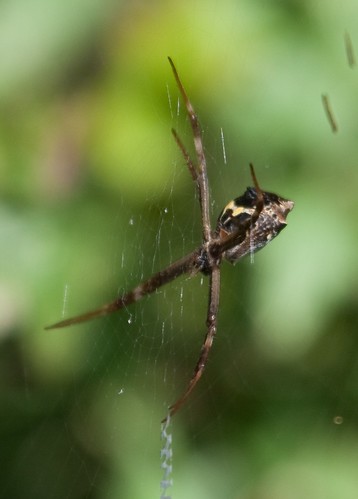
As I passed into one of the real open areas, a Red-shouldered Hawk flew over and was immediately followed by the White-tailed Kite. This time, I was able to watch it for several minutes and then take several photos.


I reached what I thought was the trail back, but there was a trail closed sign on the ground (there had been several elsewhere as well). It was down on the ground, but since it was quite windy I wasn’t sure if it just blown over so I completed the loop and then walked down the road. I hoped to catch the tram going by, but it may have taken a noontime break.
It was quite hot out by now and very windy. The walk back was not much fun and pretty much devoid of anything. The kite made a couple more passes and some more Anhingas flew over but otherwise I saw nothing until I was almost back at the visitor’s center.
Just before reaching the visitor’s center, I found another flock of birds. It may have been the original one I saw as it contained a Black-throated Green and a Blue-headed Vireo, but they were also joined by a Nashville (and of course there were Orange-crowns and Yellow-rumps all over).
The BT Green posed well, but the Nashville wasn’t as cooperative.
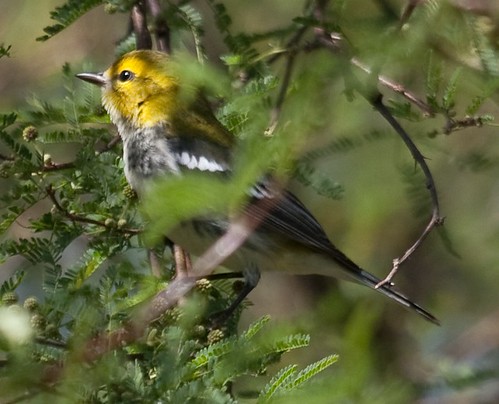
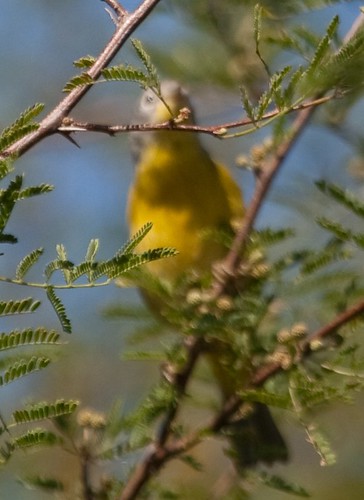
Back at the visitor’s center, I checked out the butterfly gardens. There was a nice White Peacock, a Zebra, several Tropical Checkered-Skippers, a few Reakirt’s Blues, and a bunch of other skippers that I haven’t figured out. One of the park volunteers came by and talked for a few minutes. Apparently Blue Metalmarks are fairly regular, but no luck today.
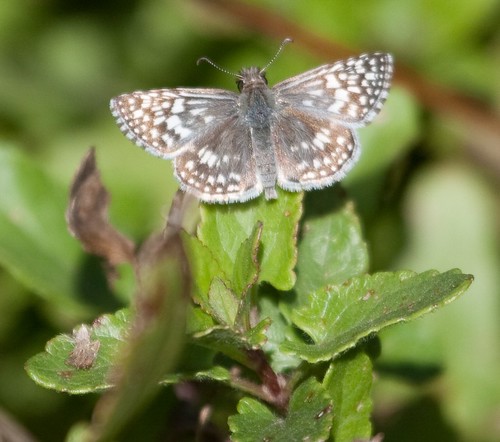
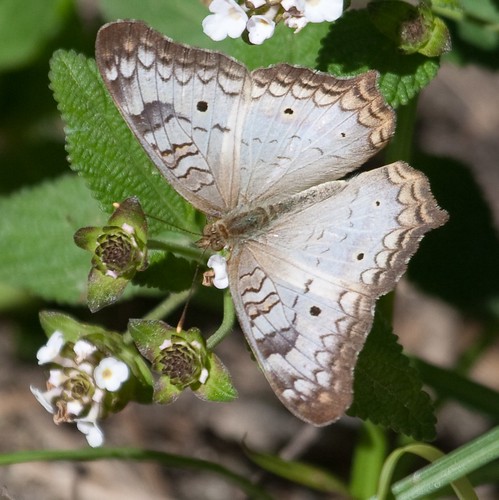
At this point, I headed to Sabal Palm. It was a fairly long drive and I munched on the rest of my brisket as I went (I really would have appreciated the leaner cut here). Once I arrived, I checked, grabbed a map and started down the forest trail. It was late in the day and fairly quiet, but since I really wanted to see the Sabal Palms and not the birds, I was ok with that. The forest trail was spectacular and was truly another world. You’ll have to google up images and see what it’s like yourself as I didn’t have a small enough lens to really capture anything.
There were lots of dragonflies around, including Band-winged Dragonlets and Pin-tailed Pondhawks. The pondhawk was only suspected to fly year-round, so this should confirm that.
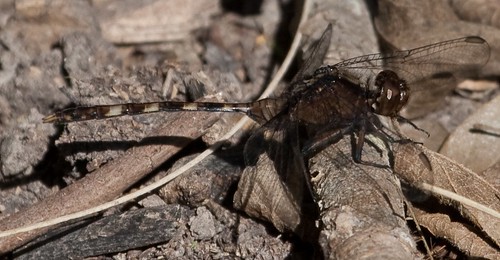
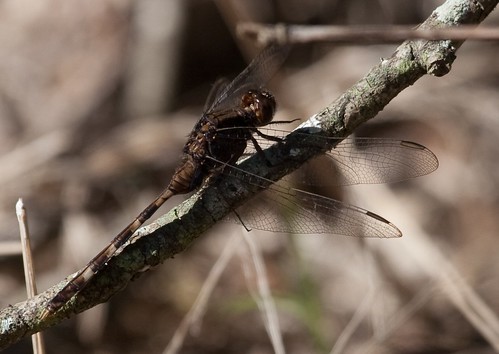
A bit further down, a large, orange butterfly flew by, my first Julia.
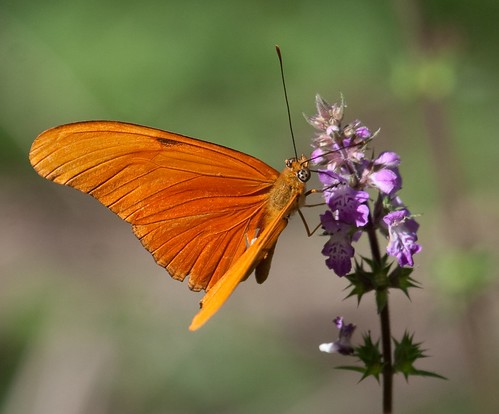
I took a quick walk to the photo blind. It was crowded and there wasn’t much visible (a few grebes, an Anhinga, a few ducks, and a bunch of turtles) so I moved on quickly.
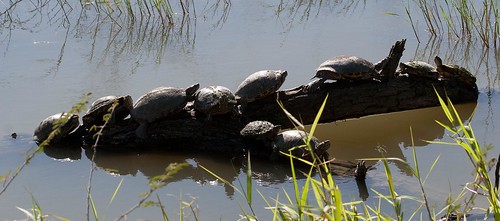
I took the next trail that crosses the water and found one of my targets for the trip, a Roseate Skimmer. What a spectacular bug!
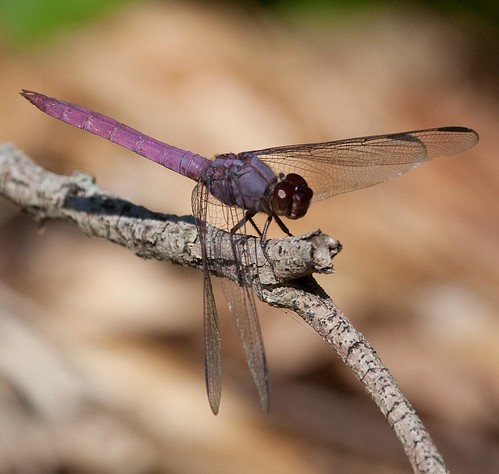
There were a bunch of skippers and a few Kiskadees nearby. I ended turning around and working my way through the rest of the forest trail. Partway through, I found a spreadwing. The light was quite difficult, but I got a couple acceptable shots.
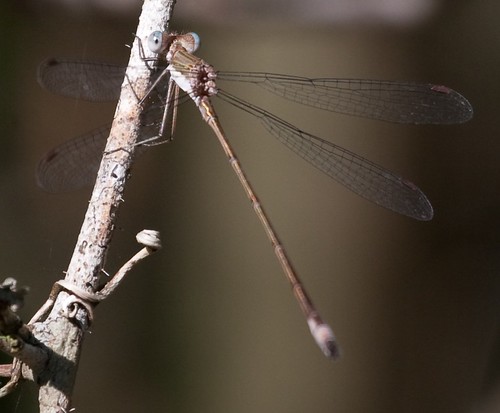
I tried putting on the close-focus filter but wasn’t able to get a good shot with that. However, it was less flighty than most and I was able to catch it by hand. It didn’t settle down to let me get a good look at the appendages, but I did notice a couple dots on the underside of the thorax. Back home, when I posted my sightings to the Texas ode list, Dennis Paulson identified it as a Rainpool Spreadwing. Searching around, the dots do appear to be a mark, although I’m not sure if they’re diagnostic and if you can see those, you can probably identify it in other ways.
After finishing the forest trail, I checked the butterfly gardens and then took the river trail. I was rather disappointed as there turned out to be no view of the river. There also wasn’t much around other than Turkey Vultures and a single Osprey. After making the loop, I found the overlook at the river and realized it wasn’t that disappointing to be hidden.

But since it was a good place to sit and I was tired, I stopped for a few minutes. There was a sparrow-like chipping coming from a tree back up the path, but I ignored it. A youngish kid and his father walked up and the bird flew into the open. It wasn’t a sparrow, but a kingbird. I snapped a couple photos and watched it for a few minutes.
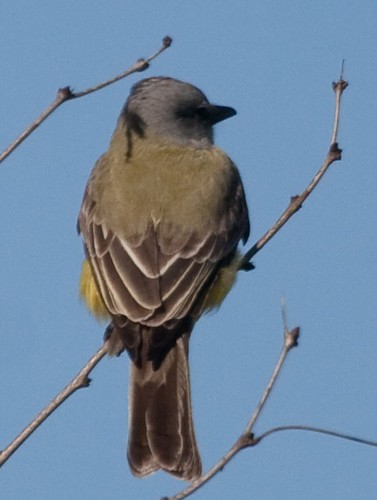
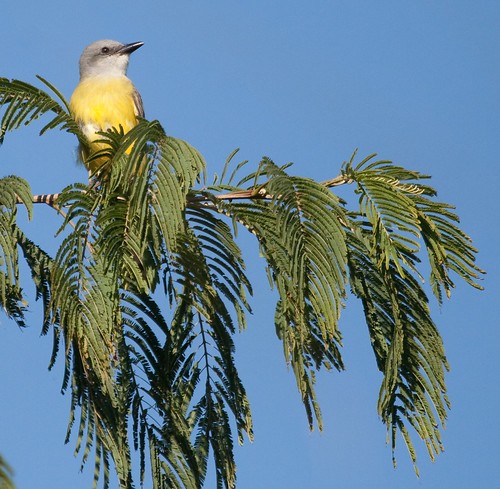
I was pretty sure the vocalizations were correct for Couch’s but decided to go back to the car and double-check. On the way, I got a basking Carolina Satyr but not much else. There was no sign of the Dusky-capped Flycatcher that had been reported. At the car, I grabbed the ipod and confirmed that it was a Couch’s, yet another lifer (unless I count the one at Santa Ana instead).
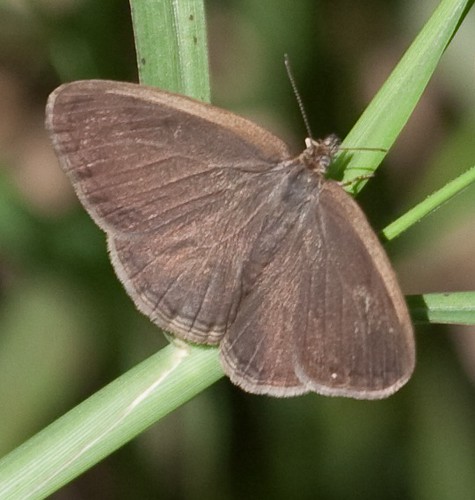
At this point, I headed towards Weslaco. I was planning on attending the bird walk at Estero Llano Grande in the morning and wanted to stop somewhere in that area. I forgot to check exactly where Weslaco is in relation to everything else and when I got tired, I stopped at the first hotel I found. I’d later figure out that I was in San Benito and should have continued for another 20 minutes, but I was tired enough not to care.
I was in the mood for a burger and put Whattaburger into the GPS. Following the directions, I saw one and pulled in. It was pretty good for fast food, but not great. Back at the car, the GPS offered to continue finding it. Since the hotel had no wireless, I went to look for a Wal-Mart and see if they had any cheap patch cables. Unfortunately, the GPS said I arrived and all I saw was a vacant lot. I decided to manage without internet for the night. I had requested the room for two nights but when I stopped at the desk to say I’d be moving on, the person said she had only checked me in for one, so it worked out. I went back to the room and collapsed (my allergies had really started acting up and I would later hear that the mountain cedar pollen count was into the thousands).
